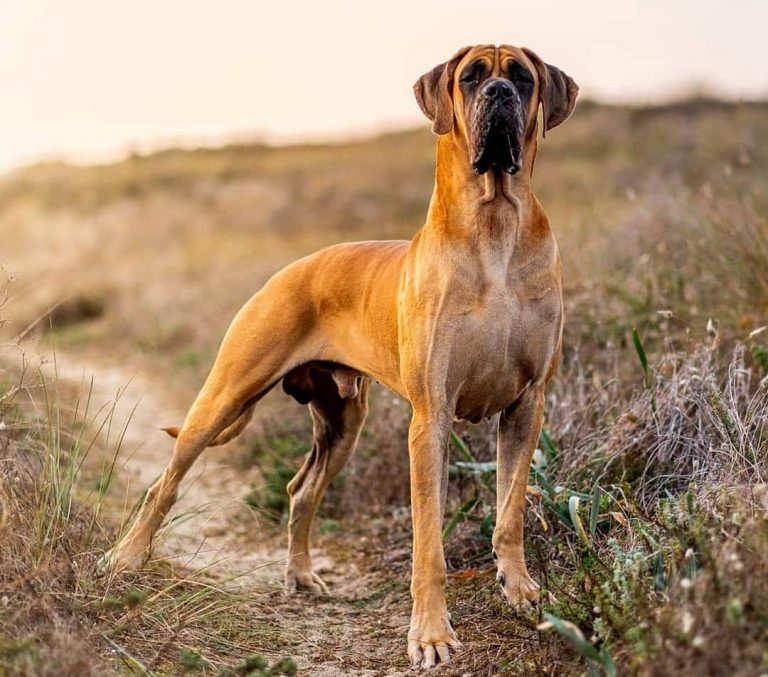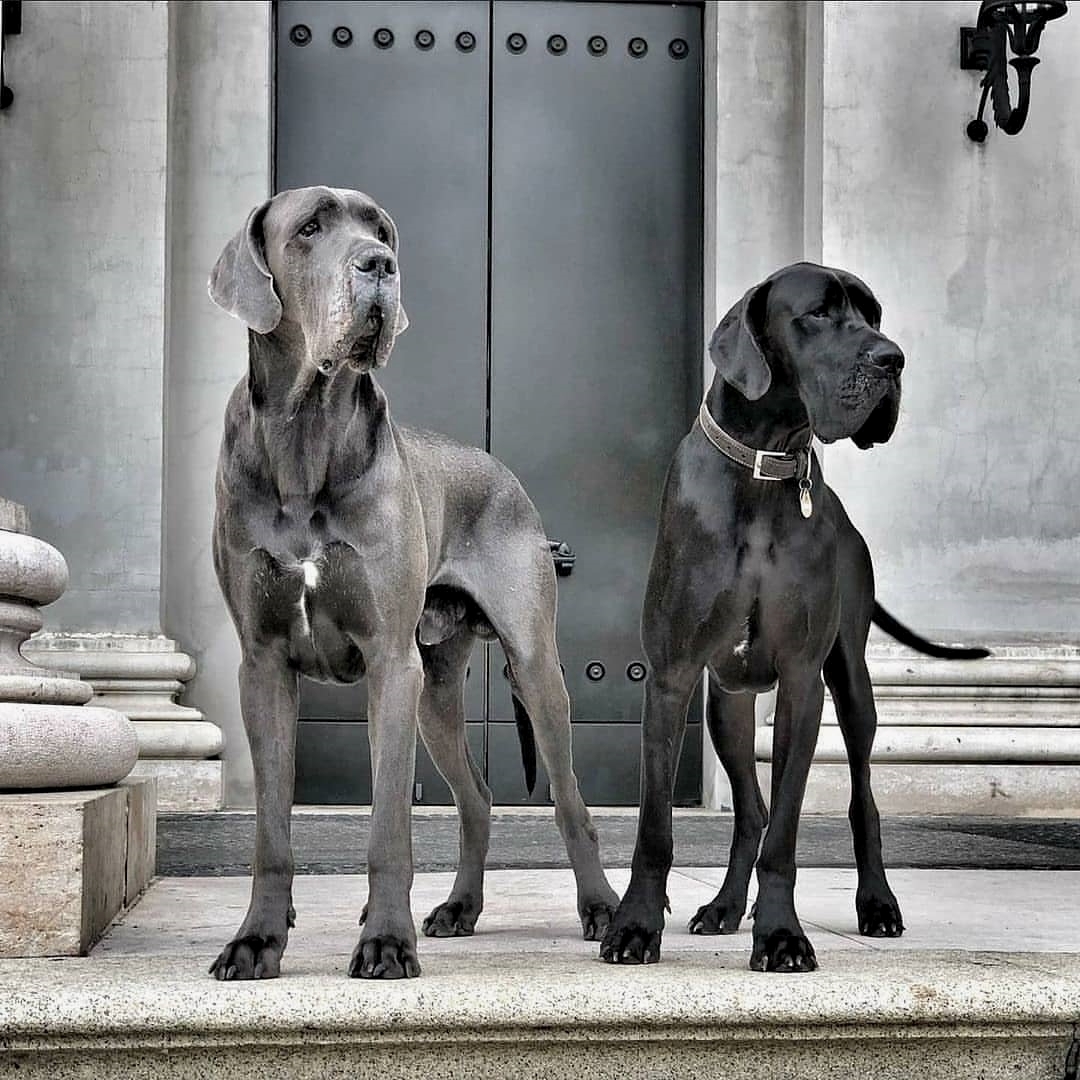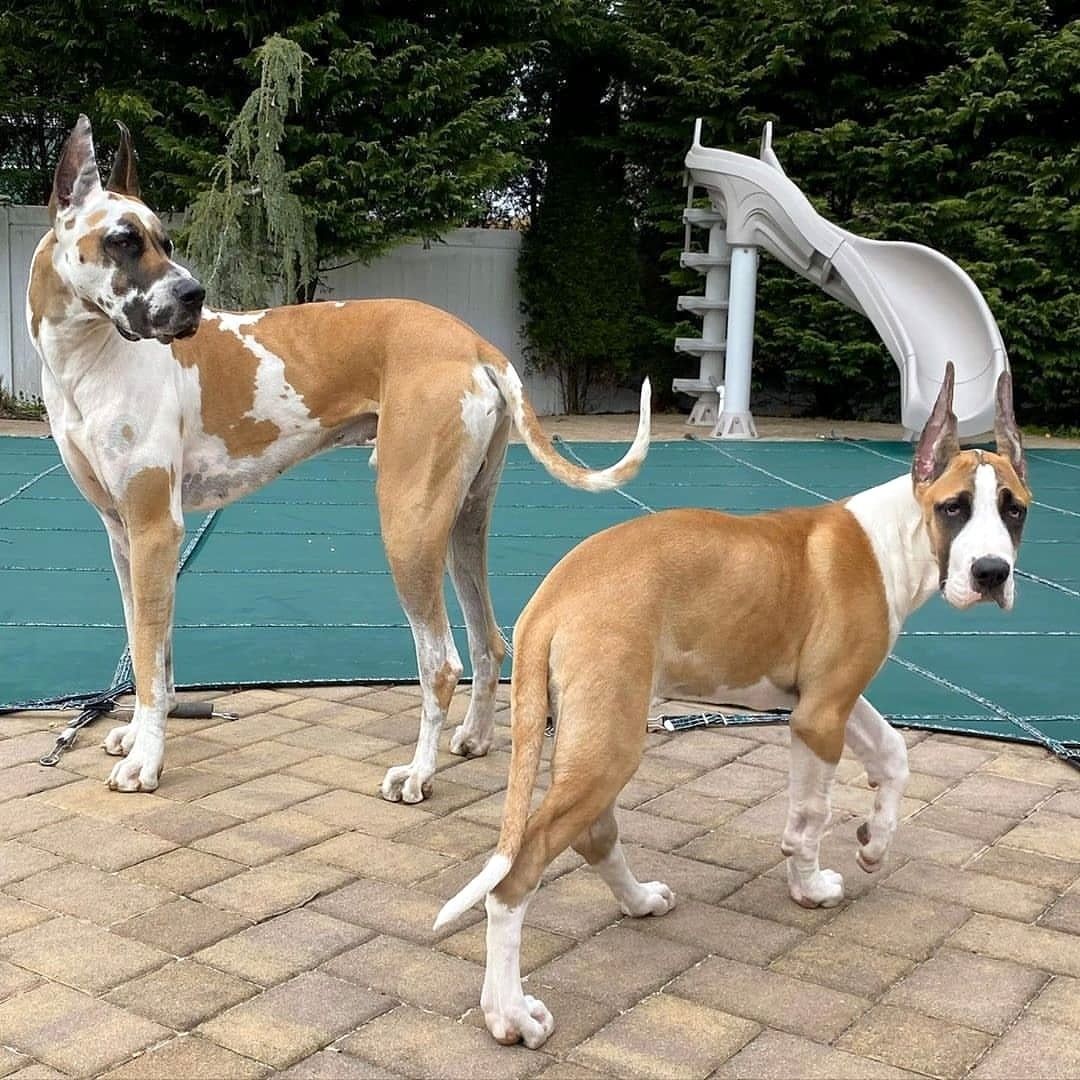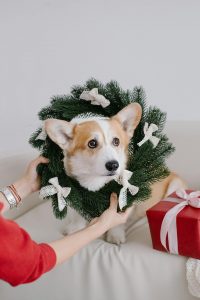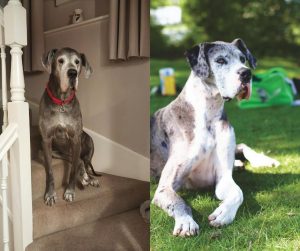The Great Dane is a large size dog breed originating from Germany. They descend from hunting dogs from the Middle Ages that were used to hunt wild boar and deer. But what were Great Danes bred for? As one of the two largest dogs in the world, along with the Irish Wolfhound, the dog had its purpose from the get-go.
Nowadays, they are famous for their friendly nature. But was it always like that? Or were these large breed dogs used for something else? People might also use them for security, as their big bodies and powerful bark will scare intruders.
Let’s take a look at the history of the Great Dane dog breed.
History Of The Breed
For Great Danes, things began in the 16th century. At the time, the nobility in European countries imported strong and long-legged dogs from England, descendants of the English Mastiff and Irish Wolfhound.
These dogs were hybrids of different sizes and phenotypes. There was no formal breed. Called Englischer Hund in Germany, it simply meant English Dog.
Since then, the molossoid dog in Germany has been associated with the English word dog. In the beginning, they were used for hunting bear, boar, and deer at princely courts.
The favorites stayed in the bed chambers of their lords at night. These chamber dogs were outfitted with ornate collars, and would also protect their princes from assassins at night.
While hunting, the Englische Dogge was a catch dog. They were used after the other hunting dogs to seize the bear or boar and hold it in place while the huntsman was able to kill it.
When hunting customs changed with the introduction of firearms, many dog types disappeared. The same happened to the Englische Dogge, which became a rare dog.
In 1878, a committee in Berlin decided to change the name of the Englische Dogge, which was used for the English Mastiff. They changed it to Deutsche Dogge or German Mastiff. This was the original Great Dane.
The committee also laid the foundation for the breed standard. During the 19th century, these dogs were known as the German Boarhound in English-speaking countries.
Some breeders tried to introduce the name German Mastiff, believing the dog should be marketed as a dog of luxury, and not as a working dog. Yet, due to the increased tension between Germany and other countries, people accepted the name Great Dane. It was a literal translation of a name used for it in the French language, Grand Danois.
While the breed has no known connection to Denmark, it remains known as The Great Dane.
What Were They Bred For?
Prior to the 19th century, they were bred for wild boar hunting. But then in the 19th century, things changed. Breeders in Germany further developed the dog breed to accompany wealthy and elite people on their trips.
By the end of the 19th century, they focused on improving the temperament. Back in the day, these large dogs had an aggressive streak in them. They tended to be ferocious.
Breeders wanted to turn them into family companions and remove their aggressive tendencies. Yes, nowadays the dog is known as The Gentle Giant. But that wasn’t the case in the early 19th century.
The good news is they were successful in eliminating aggression with selective breeding. A modern Great Dane owner has a gentler version of the breed.
Here is a fun fact. The Great Dane Club was the 4th breed club to join The American Kennel Club. That makes the Dane one of the oldest official breeds.
Specific Traits For Specific Purposes
What people do not understand is that dog breeds and their features have a specific purpose. When Danes were bred, they were some of the best-natured dogs in existence. They were even engineered to be gentler compared to their wild boar days.
Yet, they still carry many of the features that made them amazing animals back in the day.
- Their short and thick coat with glossy appearance, protected them while chasing down wild boar. It was an armor of fur
- They have a rectangular and long head and are chiseled under the eyes. Historically, they had their ears cropped, and back in the day, it was to prevent ear damage, especially during boar hunts
- Their amazing powerful body was designed for the purpose of hunting, with a deep and broad chest and a well-pronounced breastbone. The sheer size of their body made it harder for boars to fight back
- Look at them nowadays, and you will see they have an athletic gait. Their movement is easy and long, all while maintaining a top-line
Do You Know The Different Types Of Great Dane?
When you hear the term Great Dane puppy, you think of a dog that will grow up to 32 inches tall and be a muscular dog. But there are many different breeds. Yes, most of them are mixed breeds, but nevertheless, we have them in existence
- The American Bull Dane is a cross with an American Bulldog
- The Great Danesky is a mix between a Siberian Husky and Great Dane
- Great Danebull, a mix between an American Pit Bull terrier and a Great Dane
- American Foxy Dane, a cross with the American Foxhound
- Doberdane, a cross between two German breeds, Doberman and Great Dane
- The Danoodle, a Poodle mix
- Chi Dane Dane, a mix that is hard to imagine, between Chihuahua and Great Dane
The Modern Great Dane
Nowadays, Great Danes are far from what they used to be. What were Great Danes bred for? Well, for hunting. This boar hound is nowadays a great playmate for children and families. They thrive in families that provide them with love and affection.
Great Danes love hanging around and sleeping on the couch. These giant breed dogs do not need as much exercise as they used to.
They do not even bark as much. The Modern Great Dane is a gentle giant who will shower you with love and affection. Think of a big cuddling companion.

